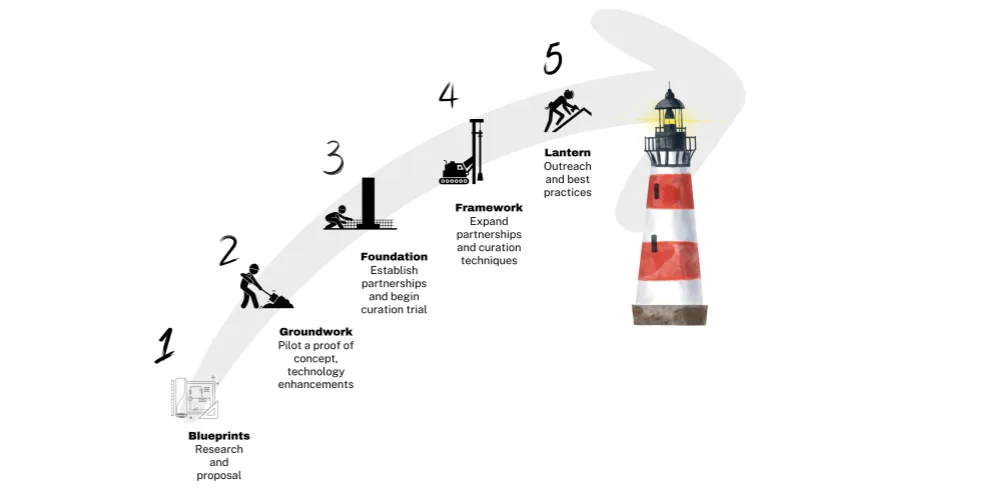Geodata Collection

Summary: Tracking page for the BTAA-GIN Geodata Collection
This page tracks our progress. It is updated frequently as our work evolves.
Date last updated: November 17, 2025
We are currently in Phase 3: Foundation, 3b. Collection & Curation Plan.
Geodata Collection

The Blueprints Phase represents the culmination of a lengthy period of time (beginning in 2015) that we put into researching geodata archiving. The research resulted in multiple scholarly articles1, reports2, and nascent proposals3. Finally, in 2023, we submitted the BTAA-GIN Geodata Collection Strategic Plan, which was approved by the BTAA-GIN Executive Committee.
During the Groundwork Phase, we focus on exploring the potential for a Geodata Collection and conducting a pilot. This phase involves experimenting with a variety of datasets to test workflows, metadata, tools, and data curation strategies. The goal is to establish a Proof of Concept.
Set up storage, basic ingest, and a pilot workgroup.
Build the pilot collection, explore technology enhancements, and document the results.
During the Foundation Phase, we begin collaborating with select data providers. This phase emphasizes building relationships, refining curation techniques, and establishing the first official collections. This work informs the development of key protocols and processes that will serve as the foundation for the project moving forward.
Communicate our newly developed capabilities and seek out data provider partnerships for our first collections.
Work iteratively with our data providers to collect, document, and publish prior versions of their datasets.
In the Framework Phase, we will build up our collections with more data providers. This will require broader communication and more outreach. We will also be relying on more streamlined workflows by this phase. This phase will include gathering feedback from stakeholders, refining workflows, and assessing the long-term sustainability of the collection. Additionally, we will increase our outreach efforts, promoting the collection to a broader audience and building partnerships to ensure its growth and visibility in the geospatial and library communities.
See Dyke, K. R., Mattke, R., Kne, L., & Rounds, S. (2016). Placing Data in the Land of 10,000 Lakes: Navigating the History and Future of Geospatial Data Production, Stewardship, and Archiving in Minnesota. Journal of Map & Geography Libraries, 12(1), 52–72. https://doi.org/10.1080/15420353.2015.1073655; Majewicz, K., J. Martindale, M. Kernik, and R. Mattke. 2024. Ephemeral geodata: An impending digital dark age. Journal of Map & Geography Libraries 20 (2):88–113. https://doi:10.1080/15420353.2024.2398542. ↩
See the reports of the Minnesota Geospatial Advisory Committee’s Archiving Workgroup ↩
See the partially realized proposal from 2019, A Spatial Data Infrastructure (SDI) for the BTAA ↩